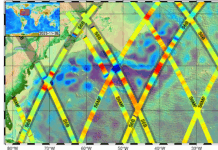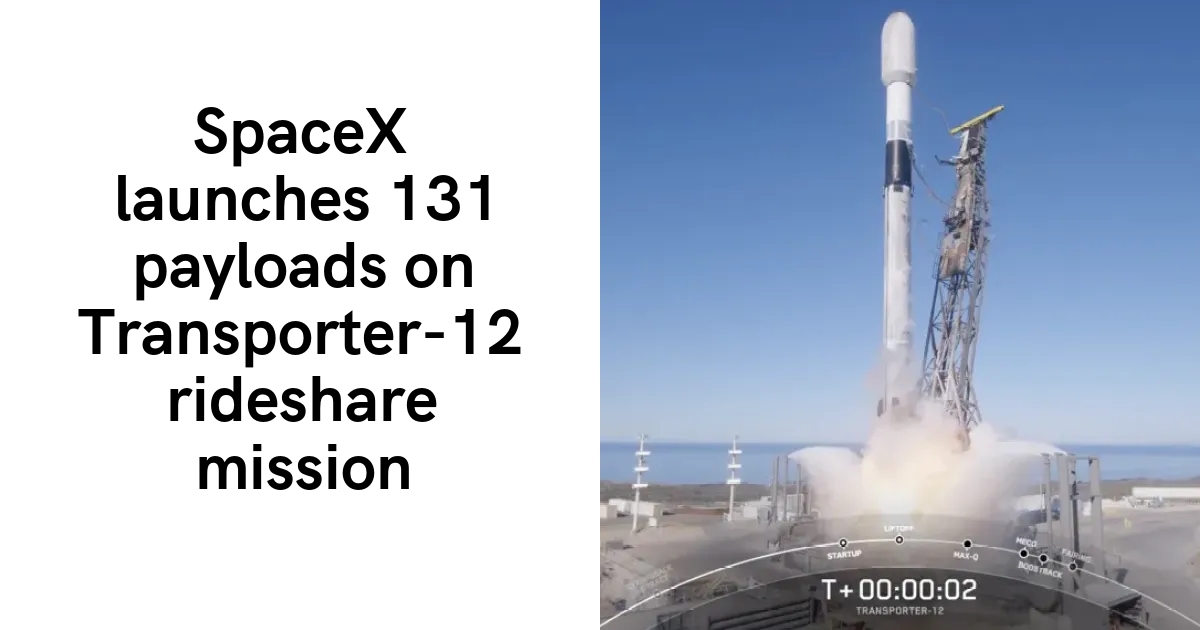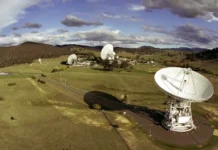SpaceX Successfully Deploys Over 130 Satellites in Latest Rideshare Mission
In an impressive display of technological prowess and logistical coordination, SpaceX successfully launched its latest rideshare mission on January 14, deploying over 130 satellites. This mission, dubbed Transporter-12, showcases a wide array of payloads, including Earth imaging satellites, reentry vehicles, orbital tugs, and even a novel ‘selfie satellite.’
Launch Details and Orbital Success
The launch took place at Vandenberg Space Force Base in California, with the Falcon 9 rocket lifting off precisely at 2:09 p.m. Eastern time. The rocket’s first stage, making its second flight, executed a flawless landing back at the launch site. Meanwhile, the second stage of the rocket proceeded to deliver the payloads into a sun-synchronous orbit, a type of orbit that allows satellites to consistently pass over the same regions of the Earth at the same local solar time, which is particularly useful for imaging satellites.
A Diverse Range of Payloads
The Transporter-12 mission carried a total of 131 payloads. This count includes 14 payloads that are housed on orbital transfer vehicles, which are essentially spacecraft that can move satellites between different orbits and will be deployed at a later time. The largest customer for this mission was Planet, a company known for its large constellation of imaging satellites. Planet deployed 36 of its Dove cubesats as well as its second Pelican high-resolution imaging satellite.
Other notable participants in this mission included Iceye and Satellogic, companies that are returning customers and are also involved in the field of Earth imaging. A significant payload came from the Mohammed Bin Rashid Space Centre in the United Arab Emirates, which launched MBZ-Sat. This 750-kilogram satellite is a high-resolution imaging satellite and was the largest single payload on the Transporter-12 mission.
New Players and Innovative Technologies
Indian startup Pixxel marked a milestone by launching its first three Firefly high-resolution satellites. The company, which recently raised $24 million to extend its Series B funding round, is focused on developing a constellation of 18 hyperspectral satellites. Hyperspectral imaging captures data at numerous wavelengths across the electromagnetic spectrum, allowing for detailed analysis of the Earth’s surface, which can be instrumental in agriculture, forestry, and environmental monitoring.
Awais Ahmed, co-founder and CEO of Pixxel, described the deployment as a "defining moment" for the company, indicating a significant step towards utilizing space technology to address global challenges.
Orbital Transfer Vehicles and Reentry Vehicles
Among the many payloads, D-Orbit contributed its latest orbital transfer vehicles, named SCV Amazing Antonius and SCV Eminent Emmanuel. These vehicles are designed to deploy satellites into their final orbits after being released from the launch vehicle. Impulse Space also participated with its LEO Express-2 mission, which is the second flight of its Mira vehicle. This mission aims to deploy cubesats for FOSSA Systems and SatRev, carry a hosted payload for HEO, and test Mira’s propulsion and communication systems.
Additionally, Transporter-12 included return vehicles for two companies. Varda Space Industries launched its second mission, W-2, which features the company’s pharmaceutical reactor along with payloads for NASA and the U.S. Air Force. The capsule will return to the Koonibba Test Range in South Australia, following regulatory delays that affected the first mission. Inversion Space introduced its first mission, Ray, which will remain in orbit for several weeks before testing its precision reentry technology by splashing down off the California coast.
Novel Concepts and Public Engagement
In an effort to make space more engaging to the general public, Transporter-12 also carried a unique payload called SatGus. This small satellite, developed by Tyvak International in collaboration with CrunchLabs, features a video screen that allows individuals to upload images. A camera on the satellite captures these images with Earth as the backdrop, creating what CrunchLabs describes as "space selfies."
Chad Brinkley, CEO of SEOPS, which managed the rideshare accommodations for SatGus, emphasized the importance of making space accessible and inspiring public interest in space exploration.
The Impact of SpaceX’s Transporter Missions
The Transporter line of missions has significantly lowered the barriers to space access for numerous companies and organizations. SpaceX has facilitated the launch of over 1,100 payloads on rideshare missions to date, including the 12 Transporter missions targeting sun-synchronous orbits and additional Bandwagon missions to mid-inclination orbits. These frequent and relatively low-cost launches have been a game-changer for many startups, providing affordable access to space.
However, not everyone in the industry views these developments positively. Some launch companies have criticized SpaceX’s pricing strategies, arguing that they are designed to undercut competition.
Conclusion
In conclusion, SpaceX’s Transporter-12 mission is a testament to the company’s ability to provide reliable and cost-effective access to space. By deploying a diverse array of satellites, the mission supports a wide range of applications, from Earth observation and scientific research to public engagement and technological innovation. As SpaceX continues to refine its rideshare program, the opportunities for new ventures and technological advancements in space exploration are bound to expand, paving the way for a new era of commercial space activity.
For more Information, Refer to this article.


































